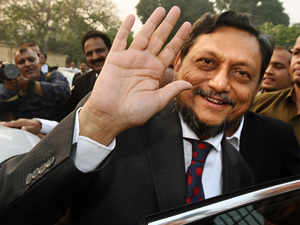
Is the Hon’ble chief justice aware that 63% of India’s 367,281 MW of installed power generation capacity, and a still higher proportion of the power actually generated, come from thermal plants? Does he have any idea of the havoc that would be created by shutting down this capacity? Is he aware of the cost and time it would take to replace thermal power with other forms of power? Would he approve of dams being constructed on a massive scale, to step up hydel power generation? Would they not aggravate the environmental fragility he is so concerned about? Since the sun cannot be ordered to shine round the clock or the wind ordered to blow likewise, if you want to rely on renewable power, it is not just massive arrays of solar panels and windmills that you will need to build, but also power storage systems on a proportionately massive scale. Does the Court have any idea of the cost this would entail and the effect of such costs on the end tariff the consumer has to pay? Probably not, after all it is not the Court’s business to run the nation’s power system.
If you ban thermal power, without alternative power sources in place, economic activity would shut down, increasing unemployment, destroying companies and shattering tax collections. Did the chief justice take these factors into account while making the sweeping statement that thermal power plants should be shut down?
Is the Court aware that there are ways to make thermal plants less polluting? Electrostatic precipitators and catalytic converters placed inside the chimneys of coal powered plants can bring down pollution. Carbon capture and storage technologies can prevent the carbon dioxide produced during power generation from being released into the air we breathe.
Has the Court taken into account the potential to produce nearly double the power we produce now without burning any additional kg of coal? The thermal efficiency at state-owned power plants, many of them ancient, is abysmally low. The higher the pressure and temperature produced in the boilers from which steam comes out to drive the turbines that generate power, the more complete the combustion of the coal and the less coal you need to burn. Supercritical, ultra supercritical and advanced ultra-supercritical plants can today achieve thermal efficiencies above 50%, meaning, of the heat produced, more than 50% can be converted into electrical energy.
Of the power that is generated, some 11% is lost due to technical factors during transmission and distribution. Transmission loss is already low. But extensive use of Ultra High Voltage Direct Current lines to evacuate power from where it is generated, could reduce transmission losses further. India uses a few HVDC lines, China has the world’s largest deployment of U-HVDC lines. Does the Supreme Court have any knowledge of these things?
For India to transition to a low-carbon economy, we will have to raise the share of gas in the overall fuel mix. Gas plants are thermal plants, too, but produce less pollution than coal burning plants. The gas can come from imports or from new coal gasification programmes that would convert the most abundant domestic fuel into relatively clean gas. Further R&D could let us split the gas produced from coal into carbon and hydrogen, the carbon producing carbon fiber and the hydrogen serving as one of the cleanest fuels that burn to produce energy and water vapour.
Has the Court taken such minor details of the power generation system into account, while blithely commenting that all thermal plants should be shut down? Probably not. You cannot really expect the Supreme Court to be well versed in the arcana of the power business.
Precisely.
The Court is not the executive. Its role is different from the executive’s and unique to itself. Its job is to deliver justice and pronounce on the legality or otherwise of matters raised before it. It should refrain from the temptation to step into the executive’s shoes and run the country.
It is the job of the executive to make policy for any field of social or economic activity. It is the job of the legislature to hold it to account on a regular basis. It is the job of the media to inform the public as to what the executive is up to and what is good or bad about its conduct. The judiciary enters the picture only when state action infringes on constitutionally guaranteed rights or infracts the law on any count.
The Court’s decision to send mediators to Shaheen Bagh was entirely misplaced. Mediation and resolution of strife fall within the executive’s ambit, not the judiciary’s. However, the Court alone can decide on the constitutional validity of the Citizenship Amendment Act that agitates the Shaheen Bagh protesters. The Court’s contribution to ending the Shaheen Bagh sit-in would be to decide on the petition before it, challenging the constitutionality of CAA that excludes Muslims from the kinds of refugees eligible for fast-track citizenship. Arghya Sengupta makes this valid point in his Times of India column http://bit.do/Arghya-caa
Blurring of the distinction between the executive and the judiciary would produce very harmful outcomes for the nation, especially when certain judges of the highest court show a propensity to carry out public adulation of the head of the executive.
Download The Economic Times News App to get Daily Market Updates & Live Business News.
Subscribe to The Economic Times Prime and read the ET ePaper online.
Download The Economic Times News App to get Daily Market Updates & Live Business News.
Subscribe to The Economic Times Prime and read the ET ePaper online.









 Get Unlimited Access to The Economic Times
Get Unlimited Access to The Economic Times
